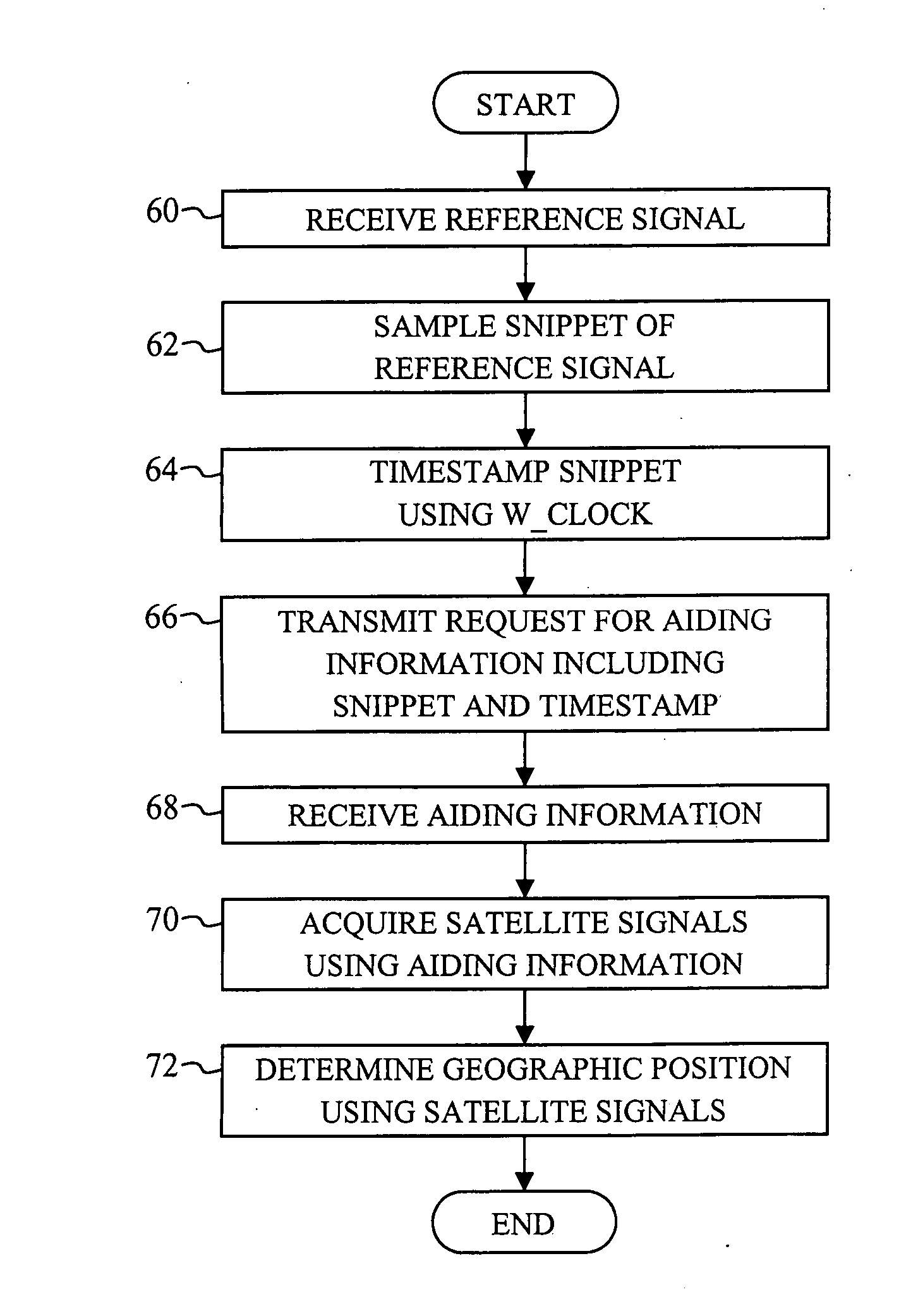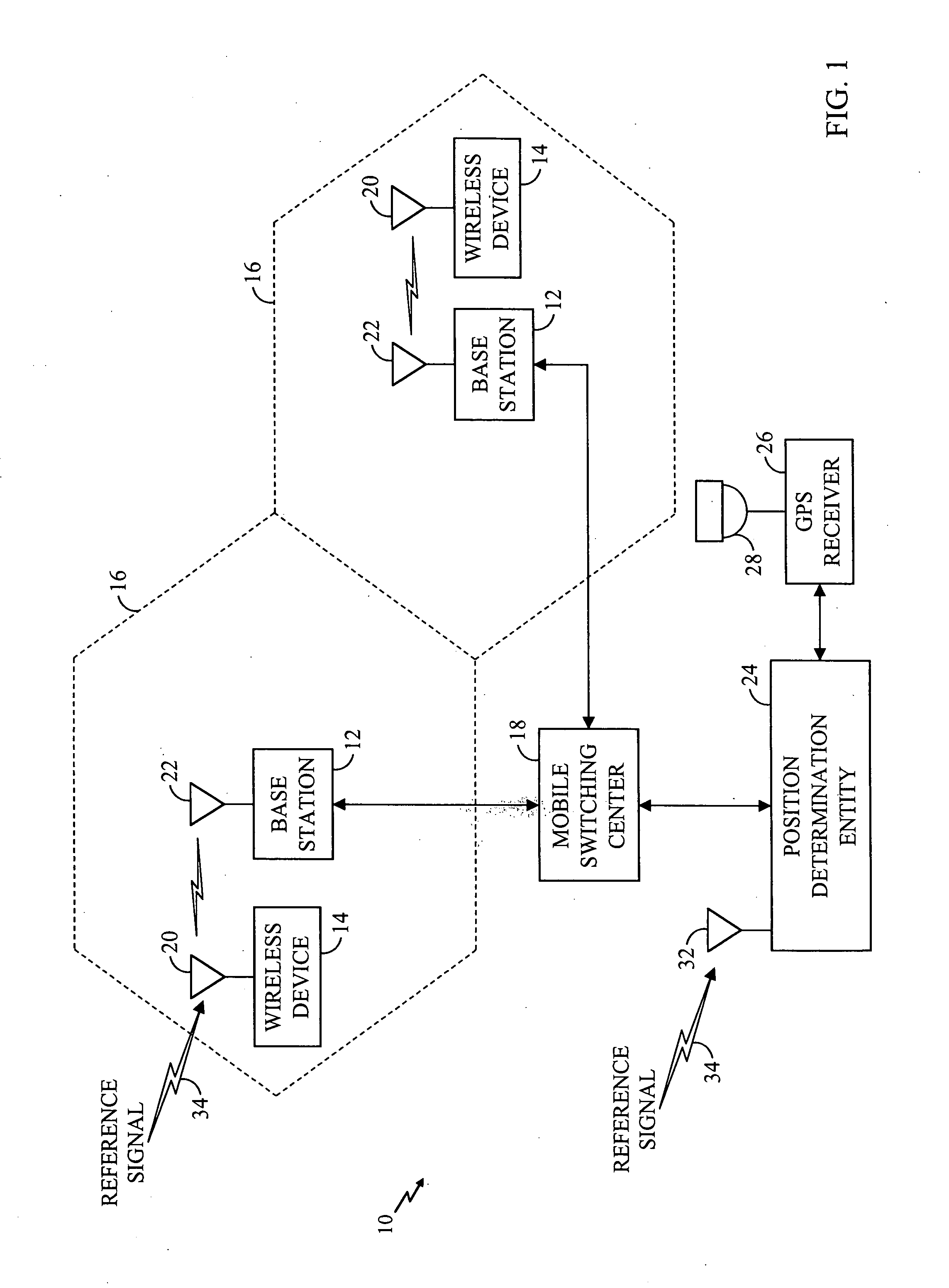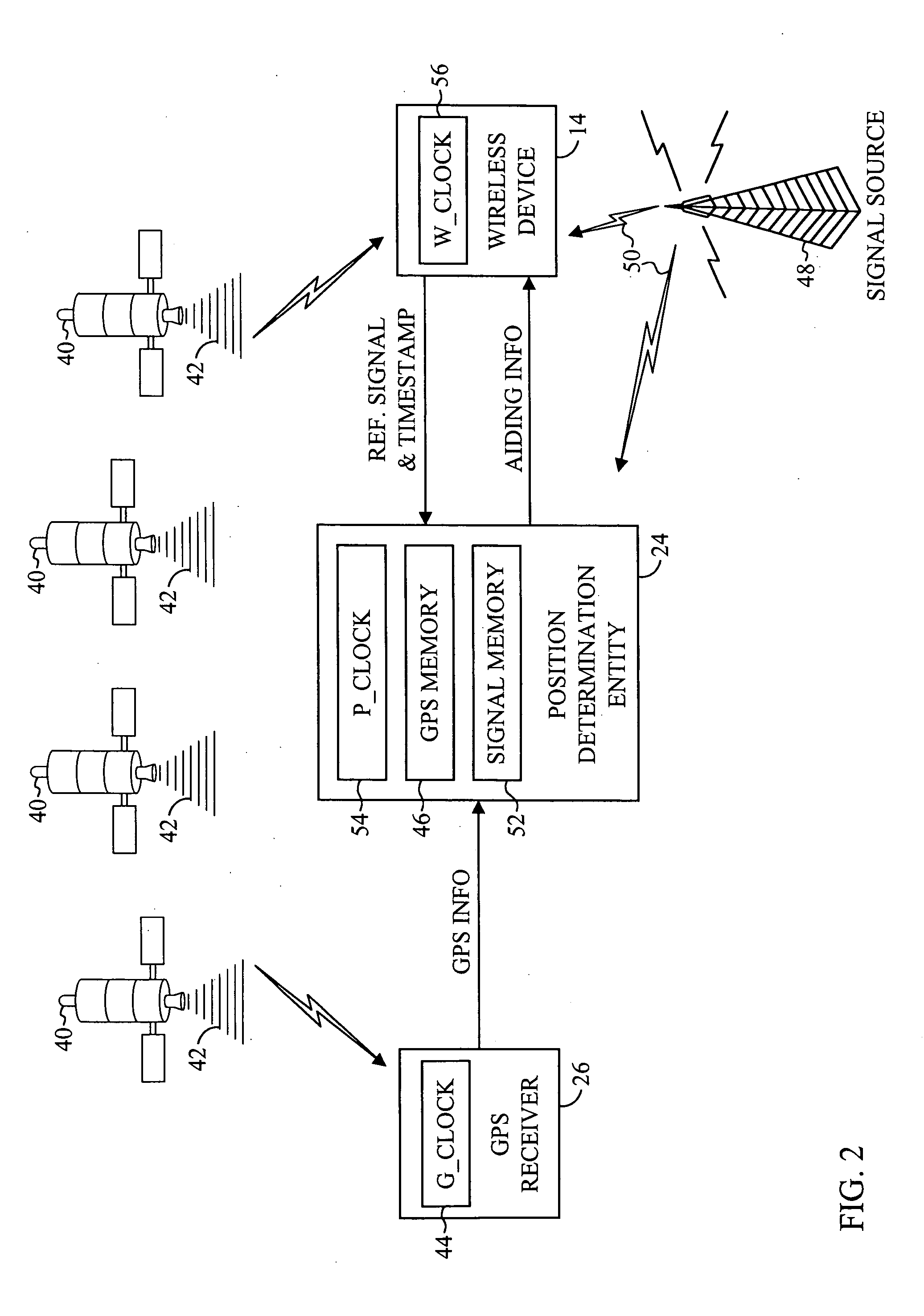Time acquisition in a wireless position determination system
a position determination and time acquisition technology, applied in the field of position determination systems, can solve the problems of inconvenient use, inability to search, and inability to accurately identify the position of the receiver, etc., and achieve the effect of improving the accuracy and efficiency of other known approaches, and reducing the cost of us
- Summary
- Abstract
- Description
- Claims
- Application Information
AI Technical Summary
Problems solved by technology
Method used
Image
Examples
Embodiment Construction
[0027] The present invention is an improved system and method for providing timing information to a mobile device in a position determination system. FIG. 1 illustrates a wireless communications system 10 in accordance with a preferred embodiment of the present invention. The wireless communications system 10 is a cell-based communications system including a plurality of base stations 12 and a plurality of wireless devices 14. Each base station 12 has an associated cell 16 defining a geographical coverage area serviced by the base station 12. Each wireless device 14 positioned within one of the cells 16 is adapted to communicate with the associated base station 12 by exchanging data packets according to a predetermined communications protocol, such as wideband code division multiple access (WCDMA). The wireless devices 14 may be any devices that are adapted to communicate with the base stations 12 over a wireless communications link, including mobile telephones, personal digital ass...
PUM
 Login to View More
Login to View More Abstract
Description
Claims
Application Information
 Login to View More
Login to View More - R&D
- Intellectual Property
- Life Sciences
- Materials
- Tech Scout
- Unparalleled Data Quality
- Higher Quality Content
- 60% Fewer Hallucinations
Browse by: Latest US Patents, China's latest patents, Technical Efficacy Thesaurus, Application Domain, Technology Topic, Popular Technical Reports.
© 2025 PatSnap. All rights reserved.Legal|Privacy policy|Modern Slavery Act Transparency Statement|Sitemap|About US| Contact US: help@patsnap.com



